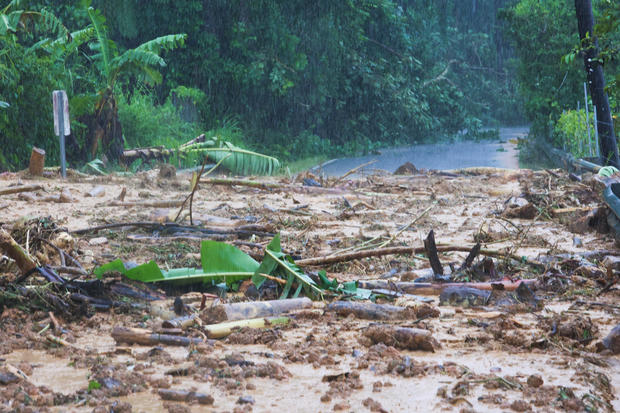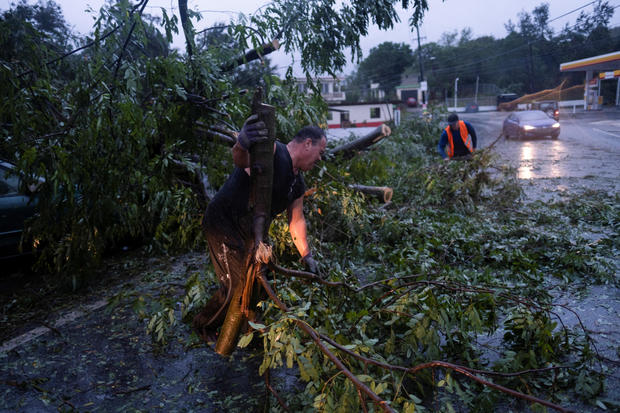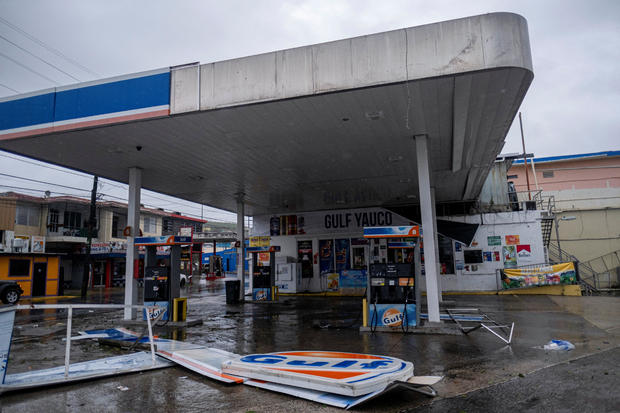Hurricane Fiona bore down on the Dominican Republic early Monday after knocking out the power grid and unleashing floods and landslides in Puerto Rico, whose governor called the damage “catastrophic.”
No deaths have been reported, but authorities in the U.S. territory said it was too early to estimate the damage from a storm that was still forecast to unleash torrential rain across the island on Monday.
Up to 30 inches was forecast for Puerto Rico’s eastern and southern regions.
“It’s important people understand that this is not over,” said Ernesto Morales, a meteorologist with the National Weather Service in San Juan.
He said flooding has reached “historic levels,” with authorities evacuating or rescuing hundreds of people across the island.
“The damages that we are seeing are catastrophic,” said Gov. Pedro Pierluisi.
Brown water rushed through streets, into homes and even consumed a runway airport in southern Puerto Rico.
Fiona ripped up asphalt from roads and washed away a bridge in the central mountain town of Utuado that police say was installed by the National Guard after Hurricane Maria hit in 2017 as a Category 4 storm.
The storm also ripped off the roofs of several homes, including that of Nelson Cirino in the northern coastal town of Loiza.
“I was sleeping and saw when the corrugated metal flew off,” he said as he observed how the rain drenched his belongings.
Deanne Criswell, director of the Federal Emergency Management Agency, said in a statement to CBS News Sunday night that the agency was “actively supporting” Puerto Rico and “immediately deployed hundreds of FEMA personnel before the storm made landfall.”
“Our focus right now is on life-saving efforts and response to immediate needs such as power restoration,” Criswell said.
Fiona was centered 25 miles south of Punta Cana, Dominican Republic early Monday with maximum sustained winds of 85 mph, according to the U.S. National Hurricane Center. It was moving to the west-northwest at 9 mph.
It hit on the anniversary of Hurricane Hugo, which slammed into the island in 1989 as a Category 3 storm.
As authorities continue to assess the damage from Fiona, many wondered when power would be restored.
“That’s probably the worst damage there is,” said Tomás Rivera, who co-owns a hotel in the southwest coastal town of El Combate.
President Biden declared a state of emergency in the U.S. territory as the eye of the storm approached.
The blackout caused Maria was blamed for the deaths of nearly 3,000 people in the storm’s sweltering aftermath. Power in some neighborhoods wasn’t restored until a year later.





